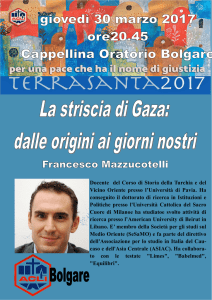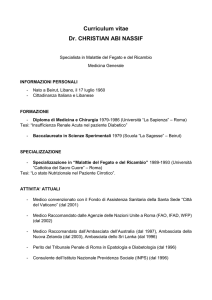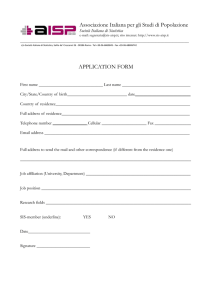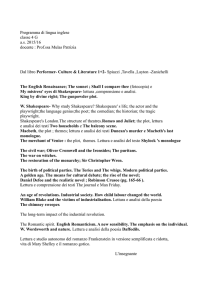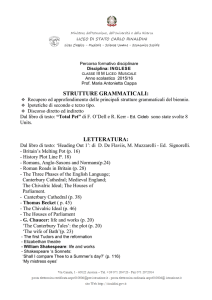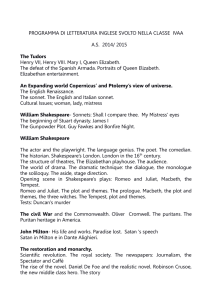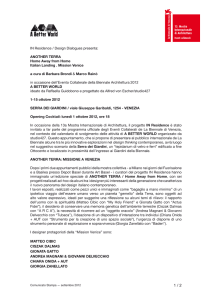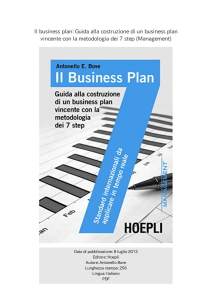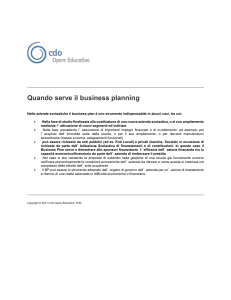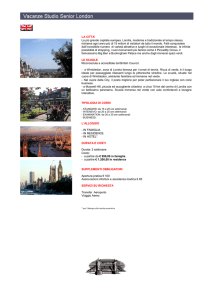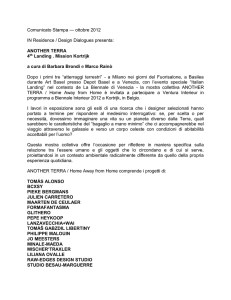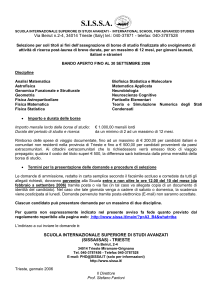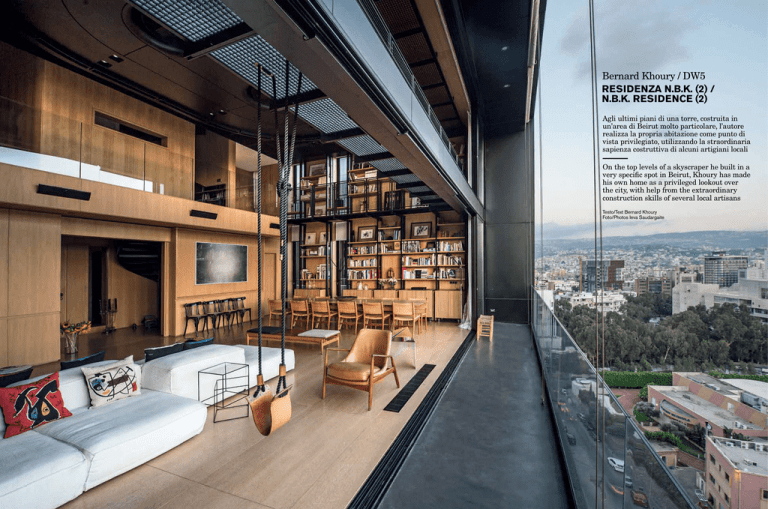
Bernard Khoury / DW5
RESIDENZA N.B.K. (2) /
N.B.K. RESIDENCE (2)
Agli ultimi piani di una torre, costruita in
un’area di Beirut molto particolare, l’autore
realizza la propria abitazione come punto di
vista privilegiato, utilizzando la straordinaria
sapienza costruttiva di alcuni artigiani locali
On the top levels of a skyscraper he built in a
very specific spot in Beirut, Khoury has made
his own home as a privileged lookout over
the city, with help from the extraordinary
construction skills of several local artisans
Testo/Text Bernard Khoury
Foto/Photos Ieva Saudargaite
domus 985 Novembre / November 2014
94 PROGETTI/PROJECTS
In questa pagina:
l’appartamento si trova
al nono piano del lotto
#2251 e prosegue per due
livelli ulteriori, con una
struttura indipendente
che appoggia
sull’edificio. La piscina
all’aperto posizionata sul
tetto è coronata da due
‘antenne’ che contengono
gli apparecchi
d’illuminazione. Orientate
a sud, sovrastano
l’altezza dell’edificio
e sono ben visibili dai
quartieri vicini
fattibilità finanziaria rappresenta il criterio
ultimo di un’impresa di successo.
Sono sopravvissuto alle difficili realtà del
settore costruendo alleanze quasi impensabili
con imprenditori disposti a ridiscutere i
meccanismi della loro attività.
Una figura ricorrente in questo contesto
è un nostro cliente, col quale abbiamo
realizzato sei progetti nell’area urbana di
Beirut, in uno dei quali ho deciso di stabilirmi,
a causa della sua posizione geografica.
Non è né a Beirut est né a Beirut ovest,
ma sulla linea di demarcazione che separava
i due settori della città, in una zona che,
durante i quindici anni del conflitto, era
deserta. Le aree negli immediati dintorni
ospitano cimiteri, chiese, edifici istituzionali,
testimonianze del Mandato francese e dei
primi, gloriosi anni della nostra giovane
nazione. La densità relativamente bassa
della zona consente di godere di una vista
straordinaria sulla città in ogni direzione,
in particolare verso sud, dove, in contrasto
con la fascia in primo piano, lo sfondo esalta
Beirut in tutto il suo splendore, la sua atroce
densità e il suo caos urbano, conseguenze
di uno sviluppo estremamente rapido e
sregolato. Beirut è una città cresciuta senza
un piano regolatore, nell’assenza di qualsiasi
regolamento urbanistico coerente. Un quadro
che conferma la bancarotta delle istituzioni
pubbliche, il collasso dello Stato e il totale
fallimento del progetto nazionale.
Nelle fasi iniziali del processo di progettazione
ho scelto di staccare i tre piani più alti
dell’edificio, collocati sulla parte frontale
del terreno per lasciare spazio a un corpo
strutturalmente autonomo appollaiato sulla
città, dove avrei in seguito abitato voltando la
PROGETTI/PROJECTS 95
schiena al mare, una scelta poco mediterranea.
Con la sua forte determinazione ad aprirsi
all’ambiente circostante, la facciata principale
è una grande apertura sovradimensionata
che incornicia un ritratto di Beirut tutt’altro
che idilliaco. Un paesaggio aspro, carico di
un’energia inafferrabile, meravigliosamente
incoerente, che conferma la volontà di
celebrare un rapporto carnale con la violenza
dello scenario urbano.
Questo progetto mi ha consentito di
imbarcarmi in una straordinaria avventura e
in un’esperienza incredibilmente gratificante,
che ho condiviso con gli artigiani ai quali è
stato affidato il lavoro, ultimi superstiti di una
specie in via d’estinzione.
Un falegname, che ho scoperto essere
stato apprendista sotto l’ala di mio nonno,
ha esercitato su di me l’autorità di un
maestro sull’allievo. Un intonacatore che
aveva trascorso mezzo secolo modellando
cornici decorative bianche, si è sentito in
dovere di dipingere la struttura del soffitto
in poliuretano nero opaco che gli avevo
commissionato – si tratta di uno scafo
modellato con cura dagli ingegneri meccanici
per far sì che coprisse i complessi apparecchi
per il condizionamento e la ventilazione.
Trovo gratificanti anche i molti momenti
inattesi che ravvivano gesti quotidiani
altrimenti ordinari, come per esempio il fatto
che mia figlia ora può fare il bagno sulla
sua terrazza, oppure che adesso è possibile
‘attraversare’ il più alto ponte pedonale con
vista su Beirut nel calore del mio soggiorno.
Mi sono inoltre concesso la prerogativa di
godermi l’ennesima vista decadente sulla
città dalla terrazza sul tetto, sospeso su un
panorama brutale.
N.B.K. Residence (2)
Plot #2251, Beirut,
Libano/Lebanon
Progetto/Architects
Bernard Khoury /DW5
Strutture/
Structural engineering
O.T.C.E.
Ingegneria elettrica/
Electrical engineering
Roger Noujeim
Ingegneria meccanica/
Mechanical engineering
Roger Kazopoulo
Lavorazione metalli/
Metalwork
ACID
Photos Ieva Saudargaite. © DW5 Bernard Khoury
Nei luoghi da cui provengo, gli ultimi
quarant’anni hanno visto le nostre abitazioni
farsi sempre più inaccessibili. Sono state
condotte a ritirarsi in se stesse, a farsi
impermeabili alla città, come se fosse
diventata un ambiente ostile. I grandi
costruttori hanno stretto alleanze con
architetti pronti a obbedire. Ci hanno imposto
di realizzare edifici in forma di enormi
scatole, con interni scarsamente illuminati
e poco aerati, appena abbelliti da polverosi
balconi. A questi appartamenti lugubri e
impenetrabili si accede solitamente tramite
spazi di circolazione ciechi, che l’apatia porta a
collocare spesso al centro della pianta.
Fa strano osservare come, invece, fino
all’inizio del XX secolo, l’habitat mediterraneo
tradizionale fosse intrinsecamente collegato
con il suo ambiente. La scale avevano
proporzioni generose, erano mostrate senza
alcuna reticenza ed esposte agli elementi
naturali, collegate con terrazze che erano
parte integrante del tessuto del quartiere.
Rappresentavano anche il prolungamento
naturale degli interni.
I nostri predecessori non mostravano alcuna
attitudine per i corridoi ciechi, la separazione
degli ambienti, la sottrazione degli spazi
abitati alla vista del visitatore. Usavano
la ventilazione naturale con maestria,
senza alcun bisogno degli insegnamenti
impartiti dagli esperti ambientali del mondo
anglosassone, né dei loro codici di condotta.
Non mettevano mano alla complicata
artiglieria di riscaldamento forzato, sistemi
di condizionamento e ventilazione.
La mia non è una nostalgia ingenua,
alimentata dalla scomparsa del vecchio
tessuto urbano mediterraneo. Non è la
desolazione romantica – dovuta al fatto
di sentirmi testimone della scomparsa dei
resti di questa architettura levantina dal
paesaggio delle nostre città – ad avermi
spinto a rivalutare gli standard dell’edilizia
residenziale e le tendenze prevalenti che
dominano il mercato immobiliare nella mia
regione. È piuttosto la volontà di ristabilire
un rapporto stretto tra l’appartamento urbano
e il suo ambiente sociale.
Mi spingerei a dire che questa battaglia
appartiene all’ambito della politica.
Si tratta di una lotta che mi è costata
innumerevoli sconfitte, progetti abortiti a
causa della mia resistenza agli irrefutabili
standard che il mercato e il settore
immobiliare locale mi avevano imposto. In
un’attività dominata dall’iniziativa privata,
dove le regole sono radicalmente diverse
da quelle delle commissioni pubbliche, la
domus 985 Novembre / November 2014
Lavori di falegnameria/
Woodwork and carpentry
Mr. Doumit Tannous
(independent)
Committente/Client
Bernard e/and Nathalie
Khoury
Superficie/Floor area
373 m2
Superficie costruita totale/
Total floor area
600 m2
Fase di progetto/
Design phase
2006-2011
Fase di costruzione/
Construction phase
2007-2012
PROSPETTO SUD-EST/SOUTHEAST ELEVATION
0 0.5 1
5
SEZIONE A-A/SECTION A-A
10m
0 0.5 1
5
N.B.K. RESIDENCE (2)
(PLOT # 2251 - 9TH FLOOR)
SOUTHEAST ELEVATION
10m
N.B.K. RESIDENCE (2)
(PLOT # 2251 - 9TH FLOOR)
NORTHWEST ELEVATION
0 0.5
1
5
(P
•
Pagina a fronte:
lo spazio completamente
aperto del soggiorno
offre una spettacolare
vista sulla città
sottostante, con scorci
sul vicino cimitero
maronita, sull’ippodromo
e altri edifici istituzionali,
concludendosi verso
il Monte Libano, che
delimita i quartieri
meridionali di Beirut. A
est, lo sguardo abbraccia
il confine definito da
Damascus Road
This page: the
apartment is on the
ninth floor of plot #2251,
and goes up two more
levels by means of an
independent structure
resting on the building.
The outdoor pool
on the roof is crowned
by two “antennas”
containing illumination
units. Facing south,
they rise above the
building’s height, and
are easily visible from
neighbourhoods in the
vicinity
•
Opposite page: the
spacious living room
offers a spectacular
panorama of the
surrounding city,
including views of
the nearby Maronite
cemetery, the racetrack
and institutional
buildings, framed by
Mount Lebanon, which
marks off the southern
districts of Beirut. The
eastward view extends
to the border formed by
Damascus Road
A
PIANTA DEL PRIMO LIVELLO/FIRST LEVEL PLAN
PIANTA A LIVELLO MEZZANINO/MEZZANINE PLAN
A
PIANTA A LIVELLO DELLA TERRAZZA/ROOFTOP TERRACE PLAN
PLANIMETRIA/SITE PLAN
0 0.5 1
0
10M
5
10m
PLOT # 2251, PLOT # 1314 BLOCKS A & B
SITE PLAN
(N.B.K. RESIDENCE (2) - PLOT # 2251 - 9TH FLOOR)
0
0 1 5 10
20m
N.B.K. RESIDENCE (2)
GROUND FLOOR PLAN
PLOT # 2251 - 9TH FLOOR
2M
0 1 5 10
20m
N.B.K. RESIDENCE (2)
GROUND FLOOR PLAN
PLOT # 2251 - 9TH FLOOR
0 1 5 10
20m
N.B.K. RESIDENCE (2)
GROUND FLOOR PLAN
PLOT # 2251 - 9TH FLOOR
0 1 5 10
20m
N.B.K. RESIDENCE (2)
MEZANNINE PLAN
PLOT # 2251 - 9TH FLOOR
0 1 5 10
20m
N.B.K. RESIDENCE (2)
MEZANNINE PLAN
PLOT # 2251 - 9TH FLOOR
0 1 5 10
20m
N.B.K. RESIDENCE (2)
MEZANNINE PLAN
PLOT # 2251 - 9TH FLOOR
0 1 5 10
20m
N.B.K. RESIDENCE (2)
ROOF PLAN
PLOT # 2251 - 9TH FLOOR
domus 985 Novembre / November 2014
• In my part of the world, during the last 40
years, our dwellings have become increasingly
opaque. They were directed to withdraw into
themselves, impermeable to the city as if it had
turned into a hostile environment. Real estate
developers have been building alliances with
passive architects. They imposed on us deep
slabs, poorly lit and poorly ventilated interiors
garnished with dusty balconies. These gloomy
introverted apartments are most commonly
accessed through blind circulation cores, often
apathetically located in the centre of the plan.
It is odd to notice that up until the beginning of
the 20th century, the traditional Mediterranean
habitat was more intrinsically connected to its
environment. Staircases were generous; they
were proudly exhibited and exposed to the
natural elements, joined by terraces that were
integral parts of the neighbourhood’s fabric.
They were also the natural continuation of
interior living spaces. Our predecessors were not
familiar with blind corridors, with segregation of
spaces, with the seclusion of the family quarters
from the visitors. They mastered natural
ventilation; they had no need to be lectured by
Anglo-Saxon environmental specialists with
codes of conduct. They did not resort to the
complex artillery of mechanical heating, airconditioning and ventilation systems. They did
not brag about being green.
I am not naively nostalgic about the
disappearance of the old Mediterranean urban
fabric. It is not the romantic desolation of
witnessing the remnants of this Levantine
architecture vanish from the landscape of
our cities that drove me to re-evaluate the
standards of housing and the prevailing trends
that dominate the residential market in my
part of the world. It is more the will to reestablish an engaging relationship between the
urban apartment and its social environment.
I would go as far as saying that this battle is
in the order of the political. This combat has
cost me innumerable defeats, aborted projects
that were caused by my resistance to the
undisputed standards that the local market and
the industry had imposed on me. In a practice
dominated by the private sector, where the rules
are radically different from those inherent to
public commissions, financial viability is the
ultimate criterion of a successful performance.
I survived the difficult realities of the private
sector by building improbable alliances with
entrepreneurs who were willing to question the
trends of their industry.
A recurrent protagonist is a client of ours with
whom we have built to this day six projects
within the boundaries of Beirut. One of these
projects is where I chose to settle. I decided
upon this site because of its geographical
situation. It is located neither in East Beirut
nor in West Beirut, but on the demarcation
line that separated the two sectors of the city,
in a zone that was deserted during 15 years
of conflict. The immediate entourage of the
plot is surrounded by cemeteries, churches,
institutional establishments, remnants of
the French mandate and the early glorious
years of our young nation. The relatively
low density of the neighbourhood offers an
exceptional view in all directions, particularly
towards the south where, in contrast with the
foreground, the background glorifies Beirut
in all its splendour, its atrocious density, its
urban chaos; consequences of an extremely
rapid and unregulated development. Beirut is a
city that evolved without master planning and
in the absence of coherent urban regulation.
This tableau confirms the bankruptcy of public
institutions, the collapse of the state and the
total exhaustion of the national project.
In the early stages of the design process, I chose
to detach the top three levels of the building
located at the forefront of the plot, giving way
to a structurally autonomous body that I would
later inhabit, perched over the city, turning my
back to the sea in a very un-Mediterranean
way. With an eager determination to open up
to the surroundings, the main facade is a large
oversized opening, framing a portrait of Beirut
that is far from idyllic. It is sour, radiant with
ungraspable energy, marvellously incoherent.
The facade symbolises the will to celebrate a
carnal relationship with the violence of the
urban landscape. This project allowed me
to embark on a fabulous adventure and an
incredibly rewarding experience, shared with
the artisans who executed the works, those last
survivors of endangered practices. A carpenter,
who happened to be my late grandfather’s
apprentice, exercised on me the authority of
the master over his pupil. A plasterer, who had
spent half a century moulding white decorative
cornices, saw himself compelled to paint the
ceiling device I had commissioned him in mat
black polyurethane – a hull, carefully plotted
by the mechanical engineers to conceal the
complex air conditioning and ventilation
machinery. I also find gratification in all the
unexpected surprises that animate otherwise
banal everyday tasks, such as the fact that my
daughter can now bathe on her own balcony, and
that I can walk across the highest pedestrian
bridge overlooking Beirut within the warmth
of my living room. I also offered myself the
prerogative of enjoying yet another decadent
position over the city: my rooftop terrace, which
hovers above the brutal panorama.
domus 985 Novembre / November 2014
PROGETTI/PROJECTS 97
Photos Ieva Saudargaite. © DW5 Bernard Khoury
96 PROGETTI/PROJECTS
In questa pagina,
l’appartamento è
articolato su tre livelli: il
primo piano con ingresso,
sala da pranzo, camera
padronale e cucina; il
mezzanino con altre due
camere da letto e una
biblioteca a tutta altezza,
accessibile anche
attraverso una passerella
a graticcio in metallo
che attraversa l’intera
stanza; il terzo livello con
la terrazza con piscina,
una stanza per gli ospiti.
A sinistra: l’ingresso
dell’appartamento, che
copre l’intera altezza,
ha un lucernario vetrato
sul tetto e la scala a
chiocciola (realizzata da
ACID) che porta ai livelli
superiori
•
This page: the apartment
is divided over three
levels. The first features
the entrance, dining
and living room, master
bedroom and kitchen. The
second is a mezzanine
with two bedrooms and
a full-height bookcase,
accessible by means of
a suspended walkway in
metal grating that crosses
the full length of the living
room. The third has a
terrace with an outdoor
swimming pool and a
guest room. Left: ending
with a skylight at the
rooftop level, the entrance
spans the entire height
of the residence and
houses a spiral staircase
(manufactured by ACID)
A sinistra: la struttura del
soffitto in poliuretano
nero opaco, modellata
dal lavoro congiunto
di ingegneri meccanici
e artigiani locali, ha
la forma di uno scafo;
serve a coprire i
complessi apparecchi
per il condizionamento
e la ventilazione. La
Residenza N.B.K.
2 prosegue le
sperimentazioni su
interni, arredi e materiali
portate avanti nel corso
degli anni, tra cui N.B.K.
1, concepito 12 anni
prima. I principali temi
sviluppati da Khoury
sono la reinterpretazione
di materiali e la
valorizzazione di antiche
tecniche artigianali
•
Left: the polyurethane
structure on the ceiling,
matte black and with
the appearance of
a hovercraft, was
modelled by mechanical
engineers and local
artisans working
together. It covers the
complex machinery for
air conditioning and
ventilation. The N.B.K.
Residence 2 represents
Khoury’s experimentation
on interiors, furniture and
materials conducted over
the years, including the
N.B.K. 1, conceived 12
years earlier. The main
themes he develops
are the reinterpretation
of materials and the
appreciation of ancient
craft techniques

